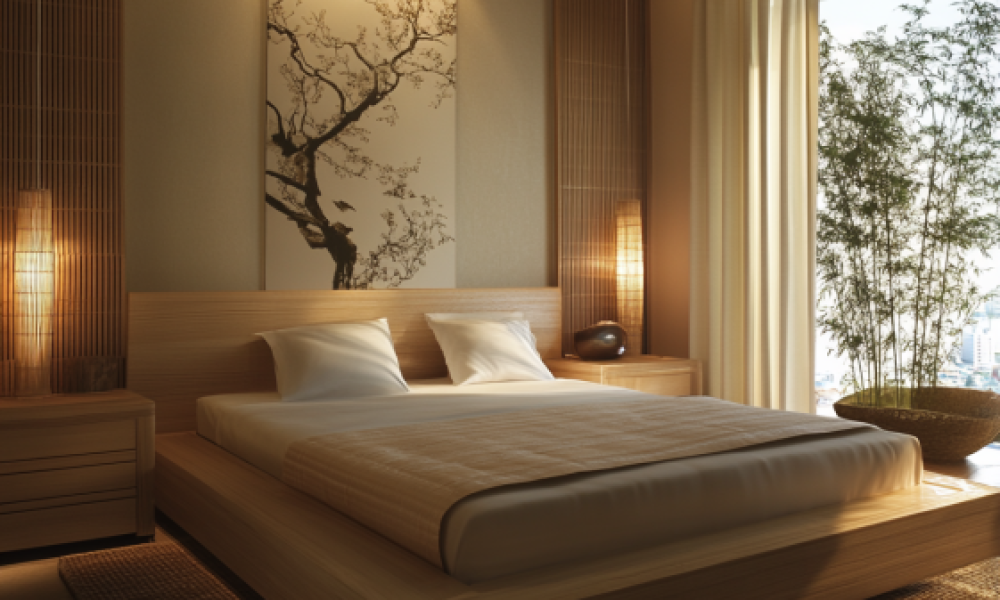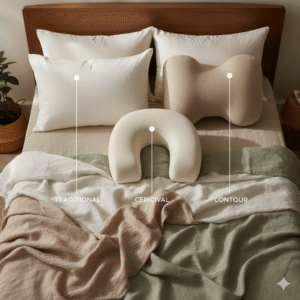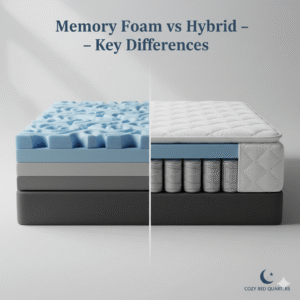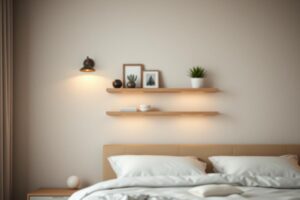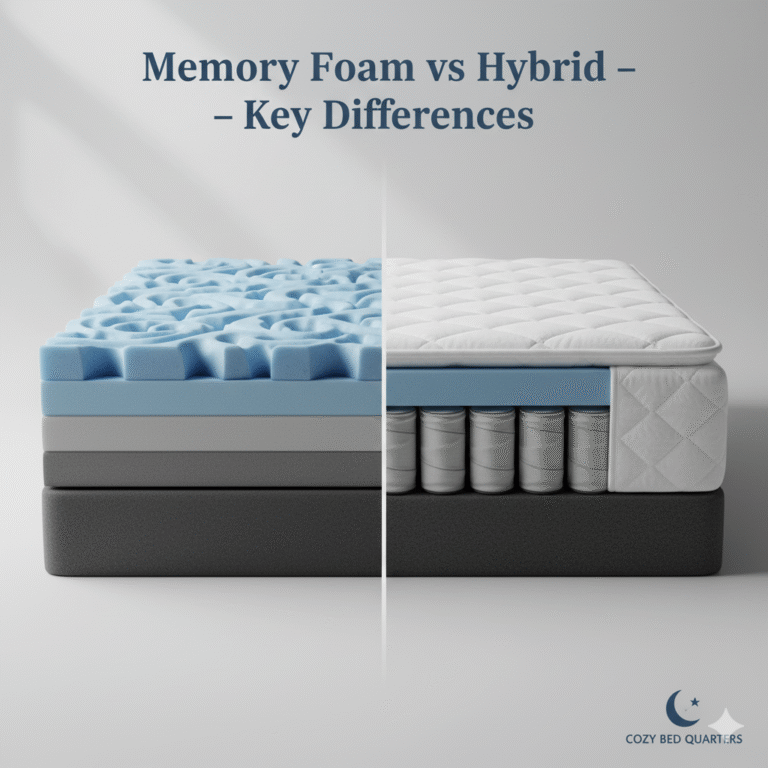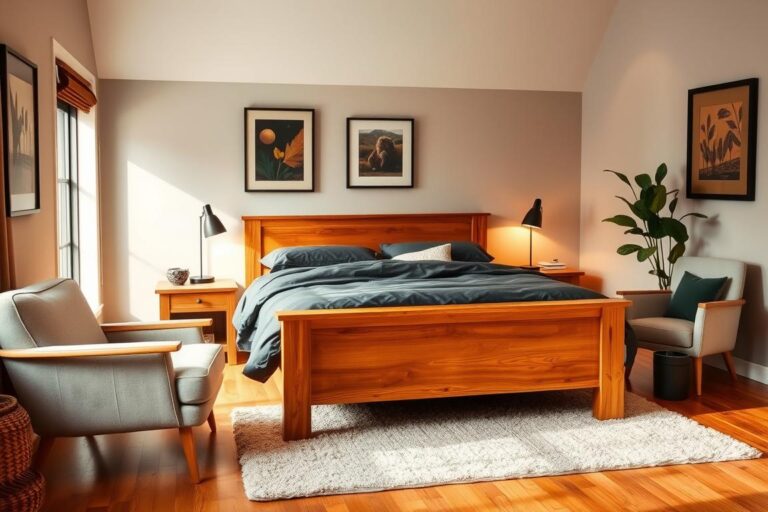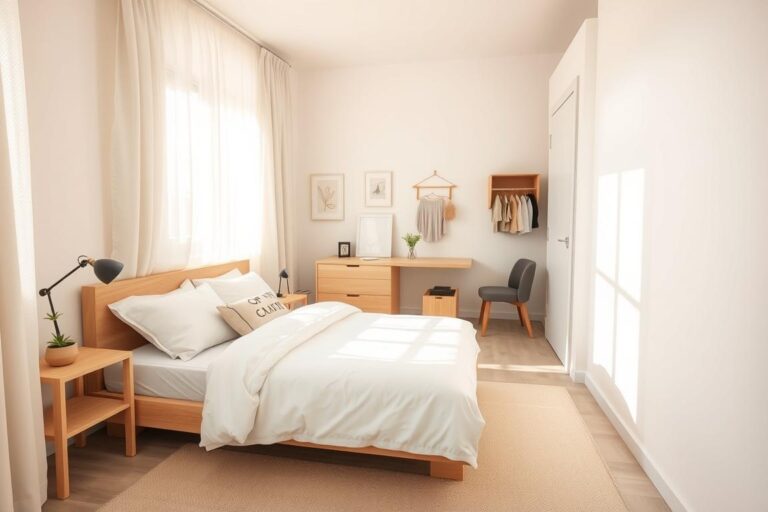Feng Shui Bedroom Elements
If your bedroom feels more chaotic than calming, it might be time to explore Feng Shui Bedroom Elements. By aligning your space with natural energy flows, you can transform your room into a sanctuary of rest and rejuvenation.
Key Takeaways
- Position your bed in the “commanding position” to enhance security and control.
- Incorporate calming, neutral colors to promote relaxation and better sleep quality.
- Maintain a clutter-free environment to allow energy to flow freely and reduce mental stress.
- Balance the five elements—wood, fire, earth, metal, and water—for harmony and vitality.
- Use layered, soft lighting to create a restful and nurturing ambiance.
Why Feng Shui Bedroom Elements Matter
Your bedroom is more than just a place to sleep; it’s your personal retreat, where your energy resets each night. When designed with Feng Shui principles, it supports emotional balance, encourages restorative rest, and cultivates calm.
Many people don’t realize that the layout and decor of a bedroom can contribute to insomnia, anxiety, or morning fatigue. Feng Shui Bedroom Elements help correct that by enhancing the natural energy flow—or chi—around you. For example, a bed directly in line with a doorway can lead to subconscious stress, whereas a realigned bed can offer better sleep within days.
Feng Shui is not just about aesthetics—it’s about energy management for well-being. As you integrate these elements, you’ll likely notice shifts in your mood, clarity, and nightly rest.
Must-Have Feng Shui Bedroom Elements
1. The Command Position for Your Bed
According to Feng Shui, your bed should be placed diagonally from the door but not in line with it—this is called the command position. It gives you a clear view of the entrance, which creates psychological safety and control while you sleep.
Why does this matter? Because your nervous system is constantly scanning for threats, even at night. Being in a vulnerable position—like having your feet point out the door or sleeping with your head under a window—can disrupt deep rest. Try shifting your bed to a place where you feel both secure and supported by the wall behind you.
Need visual inspiration? Check out our guide on optimal Feng Shui bed placement for a detailed walkthrough.

2. Soothing Colors That Ground Your Energy
Colors shape the emotional tone of your space. In Feng Shui, earth tones and soft hues are ideal for the bedroom. Think muted sage, sandy beige, creamy whites, and blush pinks—colors that bring the Earth element into your decor and ground your energy after a busy day.
Avoid overly stimulating tones like bright reds or stark blacks, which can create restlessness. Instead, layer these peaceful colors in your bedding, wall art, and decor. Accent with pastels or nature-inspired tones to bring tranquility.
Curious about color combos? Our article on best bedroom colors for sleep explores top palettes approved by Feng Shui experts and sleep researchers.
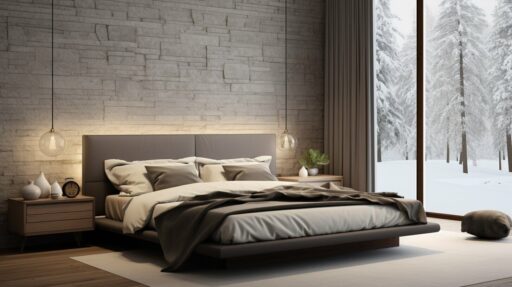
3. Clutter-Free Zones
Clutter doesn’t just take up space—it clogs energy flow and can subconsciously weigh you down. Feng Shui emphasizes minimalism and intentionality. Keep surfaces clear, especially nightstands and dresser tops. Under the bed storage is discouraged; energy should circulate freely while you sleep.
Start with a 15-minute decluttering session. Remove unused electronics, outdated decor, or anything broken. Organize with baskets or hidden drawers to preserve the calm vibe. A clean space nurtures a clean mind.
For step-by-step tips, visit our guide on Feng Shui decluttering techniques.

4. Bring in the Five Elements
Incorporating all five Feng Shui elements ensures that your room feels energetically balanced. Each element brings a unique energy, and together they form a complete system:
- Wood: Growth, vitality, and flexibility—represented by plants, bamboo, or wooden furniture.
- Fire: Passion and energy—add red hues, candles, or a Himalayan salt lamp.
- Earth: Stability and nourishment—use ceramics, clay pots, or sandy colors.
- Metal: Precision and clarity—include metal trays, brass knobs, or silver picture frames.
- Water: Flow and abundance—reflected through mirrors, fountains, or blue accents.
You don’t need to go overboard; a small touch of each is enough. The goal is to harmonize your room’s energy without cluttering it.
Need inspiration on styling each element? Dive into our deep-dive on Feng Shui elements.

5. Layered Lighting for a Restful Glow
Light is one of the most underestimated elements in Feng Shui. Rather than relying solely on harsh overhead lighting, use multiple sources: bedside lamps, wall sconces, string lights, and candles. These layers allow you to adjust the mood depending on the time of day and your emotional state.
Warm bulbs (2700K or lower) are best for the bedroom, as they mimic the glow of sunset and signal to your body that it’s time to wind down. Use dimmers if possible, and avoid blue light before bed, which can disrupt melatonin production.
For cozy lighting upgrades, explore our picks for top bedroom lighting ideas that align with Feng Shui principles.
Real-Life Transformation: Laura’s Bedroom Makeover
Laura, a busy mom of two, used to feel like her bedroom was a storage space—not a sanctuary. The room was cluttered, the lighting too bright, and her bed faced directly out the door. After reading up on Feng Shui Bedroom Elements, she made a few targeted changes: moved her bed to the command position, swapped in soft lamps, added a plant for the Wood element, and cleared the clutter.
The difference was immediate. Laura says she now feels a sense of relief just walking into her room. Her sleep improved, and so did her mood. “It’s my exhale at the end of the day,” she shares. Her story is proof that even small, affordable changes can have a big energetic impact.
Common Feng Shui Myths—Debunked
“You Have to Spend a Fortune to Feng Shui”
This is one of the biggest misconceptions. Feng Shui is about intention, not expense. You can make powerful shifts by rearranging furniture, adding a thrifted nightstand, or introducing a $5 plant. Energy responds to alignment, not price tags.
“Mirrors Are Bad in Every Case”
Mirrors are only problematic in Feng Shui when placed incorrectly. Avoid having a mirror reflect the bed directly—it can disrupt rest. But mirrors used wisely can enhance natural light, visually expand the room, and reflect beautiful elements like artwork or greenery.
Learn more in our myth-busting guide: Common Feng Shui Bedroom Myths.
Cozy Takeaway: Start Small with Feng Shui Bedroom Elements
You don’t need to be an expert or redo your entire room to feel the benefits of Feng Shui. Just begin with one or two elements—like moving your bed, softening your lighting, or clearing clutter—and notice how your space (and sleep) responds.
Feng Shui Bedroom Elements are more than design tricks; they’re tools to help you feel grounded, supported, and at peace. For a deeper look, explore The Spruce’s Feng Shui bedroom guide or revisit our complete guide to Feng Shui Elements for Positive Bedroom Energy.
FAQ
- What is the “command position” in Feng Shui?
- It’s a bed placement where you can see the door without being directly in line with it, promoting a sense of security.
- Can I have mirrors in my bedroom?
- Yes, but avoid placing them directly facing the bed to prevent energy disturbances. Instead, use them to reflect beauty or light.
- How do colors affect bedroom energy?
- Calming, neutral colors help the nervous system relax, while bright, bold colors can overstimulate the space and your mind.
- Is it okay to store items under the bed?
- It’s best to avoid storage under the bed. Blocked energy can lead to restlessness. If necessary, limit it to soft, non-emotional items like linens.
- Do I need all five elements in my bedroom?
- Yes, in small, balanced amounts. Together, the five elements create harmony and help your space support different emotional and energetic needs.
Embracing Feng Shui Bedroom Elements can transform your space into a haven of peace and rejuvenation. Start small, stay intentional, and enjoy the positive shifts in your environment and well-being.

